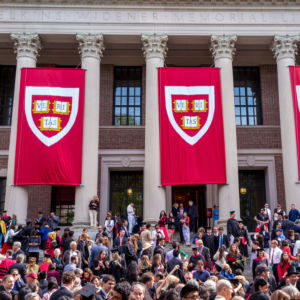Redressing the wrongs of the past …
… Especially when the past was misleading.
On April 26, Anemona Hartocollis wrote for The New York Times: “While New England’s image has been linked in popular culture to abolitionism, the report said, wealthy plantation owners and Harvard were mutually dependent.”
The “report” is Harvard University’s study of the esteemed school’s relationship to slavery. The report stated: Enslaved people were an “integral” part of the university in its early days. “Enslaved men and women served Harvard presidents and professors and fed and cared for Harvard students.”
Remember, this was Cambridge, Mass., in the 17th, 18th and 19th centuries. And, also recall the movie “Glory,” released in 1989, which told the true story of the 54th Massachusetts Volunteer Infantry, the first all-Black regiment battling for the North during the Civil War.
Perhaps, that helps explain the distortion.
Harvard has pledged $100 million to studying and reporting on its past, creating solutions and endowing the “Legacy of Slavery Fund,” which allows students, scholars and scribes to highlight Harvard’s association to slavery.
Georgetown University in Washington is supporting a similar project — with similar funds. Georgetown president, John J. DeGioia, discussed the university’s confrontation with its ugly past and its journey to atonement and reparation during a talk at The Atlantic magazine’s headquarters in March 2017.
In 1838, Georgetown sold 272 slaves for about $115,000 — equal to $3 million in today’s dollars. During those days, Black enslavement was as common as academics at Georgetown, the oldest Catholic and Jesuit university in the United States.
Georgetown counted on the Jesuit plantations of Maryland to help maintain university operations, as slaves often were gifted to the university by wealthy churchgoers. The sale of those slaves by Jesuit priests who served as Georgetown presidents directly helped save a foundering university drowning in at least $500,000 debt (today’s currency) as it faced basic survival. With that, Georgetown went from a school that almost closed nearly 200 years ago to an elite university with an endowment today of $1.5 billion.
“The university benefited from that sale,” DeGioia acknowledged during his talk five years ago. “We looked very seriously at what we could do as a university in this moment to address this fact. Part of what we’re wrestling with in America today is the legacy of never having resolved the original evil of slavery in the mid-part of the 19th century. We never ameliorated the effects of the original evil.”
Incidentally, Harvard also plans to develop and expand its partnerships with Historically Black Colleges and Universities, including funding summer programs to bring students and faculty from HBCUs to the Massachusetts school.
The George Floyd Movement produced much re-examining, reckoning and revisiting all-things-racial across the country. Including a compelling project at The Philadelphia Inquirer.
As media writer Richard Prince, columnist for “Journal-isms,” wrote in February:
“In fact … ‘A More Perfect Union,’ which began with a 6,400-word examination of the Inquirer’s past by Black journalist (Pulitzer Prize-winning) Wesley Lowery under the headline ‘Black City, White Paper.’
“Although newspapers serve circulation areas that go beyond city limits, the inaugural piece, written by Lowery and supervised by journalist Errin Haines, neither of whom are Inquirer employees, focuses on how the newspaper has ill-served Black Philadelphians.
“Robert ‘Bob’ A. Thomas became the paper’s first Black full-time staff reporter in 1954, and reporter Maida Odom arrived in 1978 after stints at two Ohio newspapers.
“More than 65 years after Thomas joined The Inquirer staff and 15 years after Odom left, Black Philadelphians remain underrepresented both on its staff and within its daily news report,” Lowery’s account says. “Just as troubling, the professionals who inherited (the Inquirer’s stated) movement toward a newsroom for all continue to cite a persistent White sensibility and lens that governs what coverage exists of Black people.”
Prince also noted there have been other recent acknowledgments of guilt by media institutions, such as by the Los Angeles Times, Kansas City Star and Baltimore Sun.
Perhaps, Michigan state Sen. Mallory McMorrow, soundly addressed the issue of redress when she said April 19 (and 15 million subsequent internet viewers): “I am a straight, White, Christian, married, suburban mom who knows that the very notion that learning about slavery or redlining or systemic racism means that children are being taught to feel bad or hate themselves because they are White is absolute nonsense.
“No child alive today is responsible for slavery. No one in this room is responsible for slavery. … We also cannot change the past. We can’t pretend that it didn’t happen, or deny people their very right to exist.”
It’s simply a matter of major institutions confronting their pasts.

